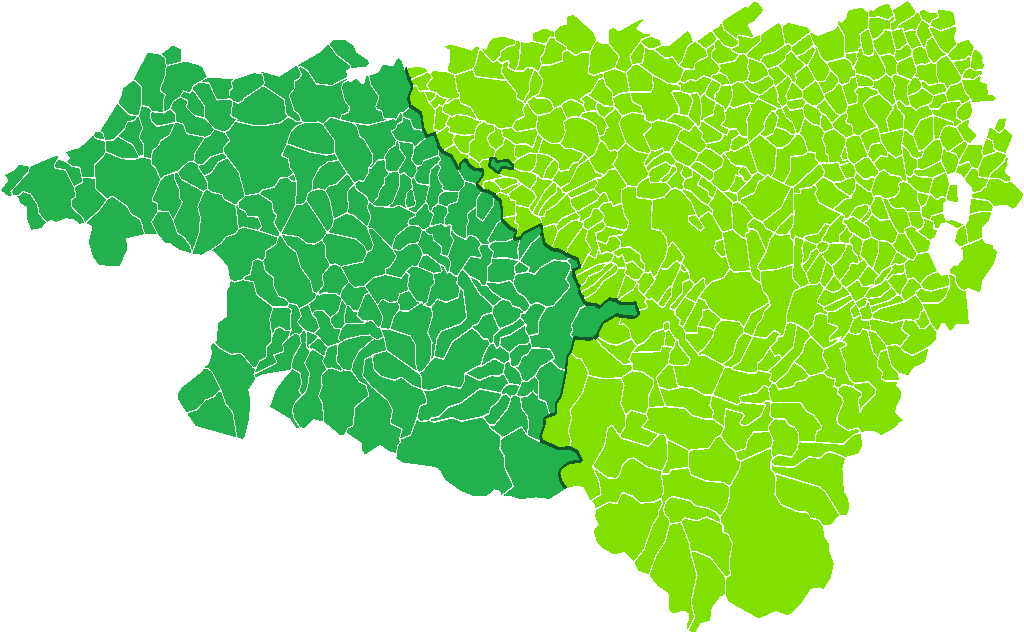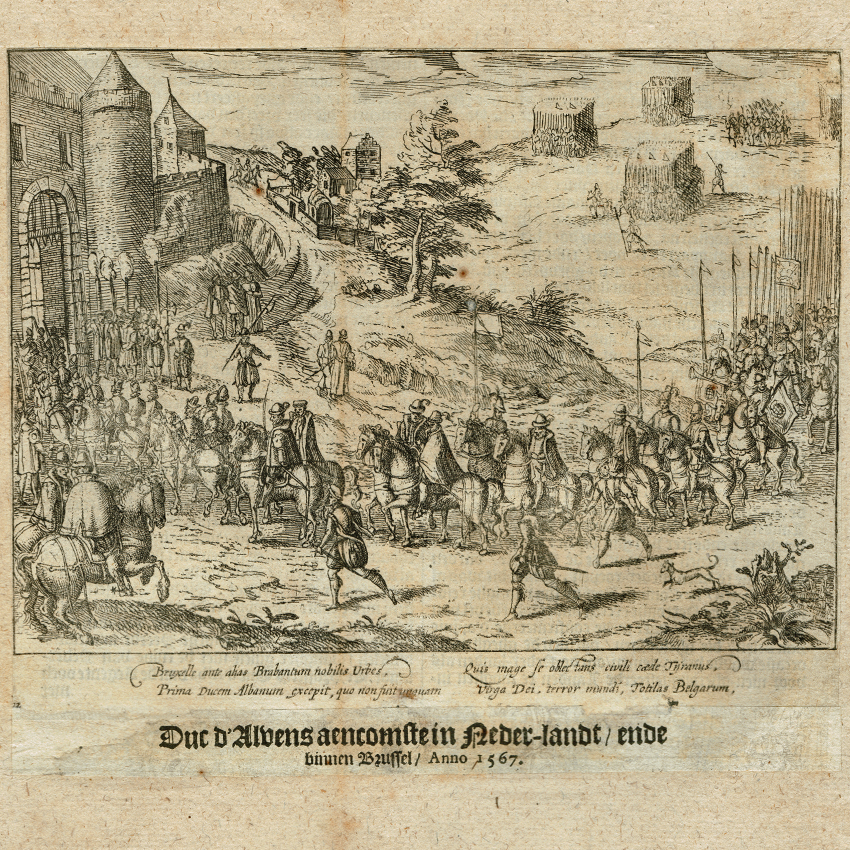|
Flag Of Navarre
The flag of Navarre, the flag of the autonomous community of Navarre, was designed in 1910 by Arturo Campión, Julio Altadill, and Hermilio de Oloriz. In 1910, the design was approved by the Provincial Council of Navarre and it was sanctioned by the Organic Law of Reintegration and Improvement of the Regional Government of Navarre (''Ley Orgánica de Reintegración y Amejoramiento del Régimen Foral de Navarra'', or LORAFNA) of August 10, 1982, which was established in Article 7.2: "The flag of Navarre is red-colored, with a shield in the center." The shield is the coat of arms of Navarre, which consists of golden chains arranged against a red background, with an emerald in the center of the pattern linked to the eight chains, with a Royal Crown, a symbol of the ancient Kingdom of Navarre, added on top of the shield. The flag of Navarre began to be used as a symbol for the region from 1910 onwards. The color red was chosen for the flag because this was the color of the field of ... [...More Info...] [...Related Items...] OR: [Wikipedia] [Google] [Baidu] |
Guidon Of The Ancient Kingdom Of Navarre
Guidon may refer to: *Guidon (heraldic flag), a type of heraldic flag *Guidon (Commonwealth), a swallow tailed flag for the colours of a light cavalry regiment *Colours, standards and guidons#Guidons and Standards#Portugal, Guidon (Portugal), a ''guião'' (small square guidon) is carried by each unit of battalion size *Guidon (United States), a military standard *Guidon Club, an anti-woman's suffrage club founded by Helen Kendrick Johnson People *Niède Guidon *Giachem Guidon *Anita Moen, Anita Moen-Guidon Publications *The GUIDON, Official Newspaper of the Ateneo de Manila University See also *Colours, standards and guidons *Guidon Games {{disambig ... [...More Info...] [...Related Items...] OR: [Wikipedia] [Google] [Baidu] |
Spanish Conquest Of Iberian Navarre
The Spanish conquest of the Iberian part of Navarre was initiated by Ferdinand II of Aragon and completed by his grandson and successor Charles V in a series of military campaigns lasting from 1512 to 1524. Ferdinand was both the king of Aragon and regent of Castile in 1512. When Pope Julius II declared a Holy League against France in late 1511, Navarre attempted to remain neutral. Ferdinand used this as an excuse to attack Navarre, conquering it while its potential protector, France, was beset by England, Venice, and Ferdinand's own Italian armies. Several attempts were made to reconquer Iberian Navarre immediately following the Castilian invasion. There was a half-hearted attempt in 1516 and a full-fledged Franco-Navarrese campaign in 1521. All attempts were defeated by the Spanish and clashes came to a halt in 1528, when Spanish troops withdrew from Lower Navarre north of the Pyrenees. The Treaty of Cambrai between Spain and France in 1529 sealed the division of Navarre along ... [...More Info...] [...Related Items...] OR: [Wikipedia] [Google] [Baidu] |
Flags Of Spain
This is a list of Spanish flags, with illustrations. For more information about the national flag, visit the article Flag of Spain. National flags Royal standards Regional flags Provincial flags The provinces of La Corunna, Alicante, Castellón, Valencia and Zamora do not have a flag. File:Álava.svg, Álava File:Bandera provincia Albacete.svg, Albacete File:No flag.svg, Alicante (No Flag) File:Flag Almería Province.svg, Almería File:Flag of Asturias.svg, Asturias File:Bandera de la provincia de Ávila.svg, Ávila File:Provincia de Badajoz - Bandera.svg, Badajoz File:Flag of the Balearic Islands.svg, Balearic Islands Flag of Barcelona (province).svg, Barcelona File:Provincia Burgos Flag.PNG, Burgos File:Bandera de Cáceres.svg, Cáceres File:Flag Cádiz Province.svg, Cádiz File:Flag of Cantabria.svg, Cantabria File:No flag.svg, '' Castellón'' (No Flag) File:Bandera Provincial de Ciudad Real.png, Ciudad Real File:Provincia de Córdoba - Bandera.svg, Córdoba Fi ... [...More Info...] [...Related Items...] OR: [Wikipedia] [Google] [Baidu] |
Coat Of Arms Of Navarre
The coat of arms of Navarre is the heraldic emblem which for centuries has been used in Navarre. It was adopted as one of the official symbols of the Chartered Community of Navarre and is regulated by Foral Law 24/2003. It is commonly used by Navarrese municipalities in their own arms. History An early appearance of the symbol was in a seal of Theobald I of Navarre. This design may have been based on the heraldic carbuncle symbol of eight radially arranged rods. By the 15th century, the mythology of the coat of arms would trace its origin back to the Battle of Las Navas de Tolosa in 1212 involving Sancho VII of Navarre, where the cavalry broke the chains of the caliph's slave-warriors and captured an emerald, among other prizes. Following the Spanish conquest of Iberian Navarre in 1512, the coat of arms of Navarre was incorporated into the coat of arms of Spain, and it is currently positioned as the fourth quarter. From 1589, when Henry III of Navarre also became King of Fr ... [...More Info...] [...Related Items...] OR: [Wikipedia] [Google] [Baidu] |
Lower Navarre
Lower Navarre ( eu, Nafarroa Beherea/Baxenabarre; Gascon/Bearnese: ''Navarra Baisha''; french: Basse-Navarre ; es, Baja Navarra) is a traditional region of the present-day French ''département'' of Pyrénées-Atlantiques. It corresponds to the northernmost ''merindad'' of the Kingdom of Navarre during the Middle Ages. After the Spanish conquest of Iberian Navarre (1512–24), this ''merindad'' was restored to the rule of the native king, Henry II. Its capitals were Saint-Jean-Pied-de-Port and Saint-Palais. In the extreme north there was the little sovereign Principality of Bidache, with an area of and a decreasing population of 44,450 (in 1901), 25,356 (in 1990). Although this denomination is not completely correct from the historical point of view, it is also known as ''Merindad de Ultrapuertos'' ("the regions beyond the mountain passes") by the southerners, and ''Deça-ports'' ("this side of the mountain passes") by the Gascon-speakers. Despite its lost administrative cohe ... [...More Info...] [...Related Items...] OR: [Wikipedia] [Google] [Baidu] |
Pyrénées-Atlantiques
Pyrénées-Atlantiques (; Gascon Occitan: ''Pirenèus Atlantics''; eu, Pirinio Atlantiarrak or ) is a department in the southwest corner of France and of the region of Nouvelle-Aquitaine. Named after the Pyrenees mountain range and the Atlantic Ocean, it covers the French Basque Country and the Béarn. Its prefecture is Pau. In 2019, it had a population of 682,621.Populations légales 2019: 64 Pyrénées-Atlantiques INSEE History Originally named Basses-Pyrénées, it is one of the first 83 created during the |
Ezker Abertzalea
Abertzale left ( eu, Ezker abertzalea, es, Izquierda abertzale; ) is a term used to refer to the parties or organizations of the Basque nationalist/separatist left, stretching from democratic socialism to communism. This leftist character is highlighted in contrast to the traditional '' jeltzale'' nationalism represented by the Basque Nationalist Party (EAJ-PNV), a conservative and Christian-democratic party, which has long been the largest in the Basque Country. The first examples of ''abertzale'' parties are the Basque Nationalist Republican Party (EAAE-PRNV), active from 1909 to 1913, and the Basque Nationalist Action (EAE-ANV), active from 1930 to 2008. They represented the non-confessional Basque nationalist references when ETA was formed in 1959 by younger generations. ''Ezker abertzalea'' (or, in Spanish, ''izquierda abertzale'') is notably used when referring to the leftist-nationalist environment of Batasuna, an outlawed political party. More recently, in 1986, a le ... [...More Info...] [...Related Items...] OR: [Wikipedia] [Google] [Baidu] |
Francisco Franco
Francisco Franco Bahamonde (; 4 December 1892 – 20 November 1975) was a Spanish general who led the Nationalist faction (Spanish Civil War), Nationalist forces in overthrowing the Second Spanish Republic during the Spanish Civil War and thereafter ruled over Spanish State, Spain from 1939 to 1975 as a dictator, assuming the title ''Caudillo''. This period in Spanish history, from the Nationalist victory to Franco's death, is commonly known as Francoist Spain or as the Francoist dictatorship. Born in Ferrol, Spain, Ferrol, Galicia (Spain), Galicia, into an upper-class military family, Franco served in the Spanish Army as a cadet in the Toledo Infantry Academy from 1907 to 1910. While serving in Spanish protectorate in Morocco, Morocco, he rose through the ranks to become a brigadier general in 1926 at age 33, which made him the #Military career, youngest general in all of Europe. Two years later, Franco became the director of the General Military Academy in Zaragoza. A ... [...More Info...] [...Related Items...] OR: [Wikipedia] [Google] [Baidu] |
Second Spanish Republic
The Spanish Republic (), commonly known as the Second Spanish Republic (), was the form of government in Spain from 1931 to 1939. The Republic was proclaimed on 14 April 1931, after the deposition of Alfonso XIII, King Alfonso XIII, and was dissolved on 1 April 1939 after surrendering in the Spanish Civil War to the Nationalist faction (Spanish Civil War), Nationalists led by General Francisco Franco. After the proclamation of the Republic, Provisional Government of the Second Spanish Republic, a provisional government was established until December 1931, at which time the Spanish Constitution of 1931, 1931 Constitution was approved. During this time and the subsequent two years of constitutional government, known as the First Biennium, Reformist Biennium, Manuel Azaña's executive initiated numerous reforms to what in their view would modernize the country. In 1932 the Jesuits, who were in charge of the best schools throughout the country, were banned and had all their propert ... [...More Info...] [...Related Items...] OR: [Wikipedia] [Google] [Baidu] |
Fernando Álvarez De Toledo, 3rd Duke Of Alba
Fernando Álvarez de Toledo y Pimentel, 3rd Duke of Alba (29 October 150711 December 1582), known as the Grand Duke of Alba (, pt, Grão Duque de Alba) in Spain and Portugal and as the Iron Duke ( or shortly 'Alva') in the Netherlands, was a Spanish noble, general and diplomat. He was titled the 3rd Duke of Alba de Tormes, 4th Marquess of Coria, 3rd Count of Salvatierra de Tormes, 2nd Count of Piedrahita, 8th Lord of Valdecorneja, Grandee of Spain and a Knight of the Order of the Golden Fleece. His motto in Latin was ''Deo patrum nostrorum'' ("To the God of our fathers"). He was an adviser of King Charles I of Spain (Charles V, Holy Roman Emperor), and his successor, Philip II of Spain, Mayordomo mayor of both, member of their Councils of State and War, governor of the Duchy of Milan (1555–1556), viceroy of the Kingdom of Naples (1556–1558), governor of the Netherlands (1567–1573) and viceroy and constable of the Kingdom of Portugal (1580–1582). He represented Philip ... [...More Info...] [...Related Items...] OR: [Wikipedia] [Google] [Baidu] |
Navarre
Navarre (; es, Navarra ; eu, Nafarroa ), officially the Chartered Community of Navarre ( es, Comunidad Foral de Navarra, links=no ; eu, Nafarroako Foru Komunitatea, links=no ), is a foral autonomous community and province in northern Spain, bordering the Basque Autonomous Community, La Rioja, and Aragon in Spain and Nouvelle-Aquitaine in France. The capital city is Pamplona ( eu, Iruña). The present-day province makes up the majority of the territory of the medieval Kingdom of Navarre, a long-standing Pyrenean kingdom that occupied lands on both sides of the western Pyrenees, with its northernmost part, Lower Navarre, located in the southwest corner of France. Navarre is in the transition zone between Green Spain and semi-arid interior areas, and thus its landscapes vary widely across the region. Being in a transition zone also produces a highly variable climate, with summers that are a mix of cooler spells and heat waves, and winters that are mild for the latitude. Navarr ... [...More Info...] [...Related Items...] OR: [Wikipedia] [Google] [Baidu] |
Luis Correa (chronicler)
Luis Correa Maurelios (25 August 1897 – 14 August 1949) was a Chilean boxer who competed in the 1924 Summer Olympics. In 1924 he was eliminated in the first round of the light heavyweight class after losing his fight to Georges Rossignon. References 1897 births 1949 deaths Light-heavyweight boxers Olympic boxers for Chile Boxers at the 1924 Summer Olympics Chilean male boxers 20th-century Chilean people Place of birth missing {{Chile-boxing-bio-stub ... [...More Info...] [...Related Items...] OR: [Wikipedia] [Google] [Baidu] |



